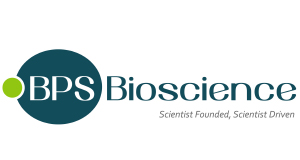NAD+, Biotin-Labeled, CAS 53-84-9
NAD+, Biotin-Labeled, CAS 53-84-9
SKU
BPS80610
Packaging Unit
500 µl
Manufacturer
BPS Bioscience
Availability:
loading...
Price is loading...
Products from BPS Bioscience require a minimum order value above 400€
Application: Useful for the study of PARP enzyme activity and DNA damage, or to purify ADP-ribosylated enzymes.
Background: Activated PARP cleaves NAD+ to nicotinamide and ADP-ribose and polymerizes the ADP-ribose on nuclear acceptor proteins such as histones, transcription factors, and PARP itself. Biotinylated NAD+ (6-Biotin-17-NAD+) provides a non-isotopic alternative to radiolabeled NAD+ for assays requiring this substrate. Biotinylated NAD+ can be used as an indirect measure of PARP activity when biotin incorporation is detected using a streptavidin detection system. Biotinylated NAD+ is also useful for labeling or purifying proteins via poly (ADP)ribosylation.
CAS Number: 53-84-9
Description: NAD+ covalently labeled with biotin (6-biotin-17-nicotinamide-adenine-dinucleotide). Can be used as a substrate by poly(ADP-ribosyl) polymerase (PARP) enzymes for generating biotin-labeled ADP-ribose monomers in PARylation reactions.
Format: Aqueous buffer solution
Purity: ≥95% by HPLC
Storage Stability: Store solutions in aliquots at -80°C for up to one year.
Supplied As: 250 µM aqueous solution
Warnings: Avoid freeze/thaw cycles.
Biosafety Level: Not applicable (BSL-1)
References: 1. Bakondi, E., et al. J Histochem Cytochem January 2002 vol. 50 no. 1 91-98.
2. Zhang, J. (1997). Meth. Enzymol. 280: 255-65.
3. Till, S., and Ladurner, A.G. (2009). Front Biosci. 14:3246-3258.
4. Ying, W. (2007). Front Biosci. 12:1863-88.
5. Ying, W. (2008). Antioxidants & Redox Signaling. 10(2):179-206.Application Reference:
Activity-based assay for human mono-ADP-ribosyltransferases ARTD7/PARP15 and ARTD10/PARP10 aimed at screening and profiling inhibitors (2013)
Application: Useful for the study of PARP enzyme activity and DNA damage, or to purify ADP-ribosylated enzymes.
Background: Activated PARP cleaves NAD+ to nicotinamide and ADP-ribose and polymerizes the ADP-ribose on nuclear acceptor proteins such as histones, transcription factors, and PARP itself. Biotinylated NAD+ (6-Biotin-17-NAD+) provides a non-isotopic alternative to radiolabeled NAD+ for assays requiring this substrate. Biotinylated NAD+ can be used as an indirect measure of PARP activity when biotin incorporation is detected using a streptavidin detection system. Biotinylated NAD+ is also useful for labeling or purifying proteins via poly (ADP)ribosylation.
CAS Number: 53-84-9
Description: NAD+ covalently labeled with biotin (6-biotin-17-nicotinamide-adenine-dinucleotide). Can be used as a substrate by poly(ADP-ribosyl) polymerase (PARP) enzymes for generating biotin-labeled ADP-ribose monomers in PARylation reactions.
Format: Aqueous buffer solution
Purity: ≥95% by HPLC
Storage Stability: Store solutions in aliquots at -80°C for up to one year.
Supplied As: 250 µM aqueous solution
Warnings: Avoid freeze/thaw cycles.
Biosafety Level: Not applicable (BSL-1)
References: 1. Bakondi, E., et al. J Histochem Cytochem January 2002 vol. 50 no. 1 91-98.
2. Zhang, J. (1997). Meth. Enzymol. 280: 255-65.
3. Till, S., and Ladurner, A.G. (2009). Front Biosci. 14:3246-3258.
4. Ying, W. (2007). Front Biosci. 12:1863-88.
5. Ying, W. (2008). Antioxidants & Redox Signaling. 10(2):179-206.Application Reference:
Activity-based assay for human mono-ADP-ribosyltransferases ARTD7/PARP15 and ARTD10/PARP10 aimed at screening and profiling inhibitors (2013)
| SKU | BPS80610 |
|---|---|
| Manufacturer | BPS Bioscience |
| Manufacturer SKU | 80610 |
| Package Unit | 500 µl |
| Quantity Unit | STK |
| Product information (PDF) | Download |
| MSDS (PDF) |
|

 Deutsch
Deutsch








